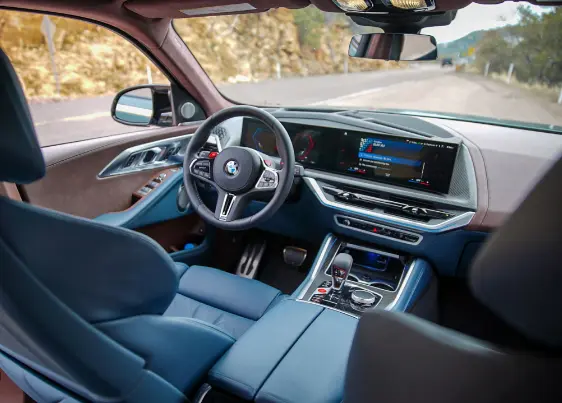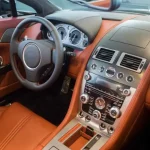Have you ever been on a long road trip and found yourself shifting in your seat, adjusting the steering wheel, or trying to find the perfect position to alleviate discomfort? If so, you’ve experienced firsthand the importance of ergonomics in car interior design.
Ergonomics is the science of designing products and environments to optimize human well-being and performance, and it plays a crucial role in creating comfortable and user-friendly car interiors.
In this article, we’ll delve into the science of comfort and how ergonomics influences car interior design.
1. The Human-Car Interface
Ergonomics in car design is all about ensuring that the interaction between the driver, passengers, and the vehicle is as natural, efficient, and comfortable as possible. Here are some key aspects of the human-car interface:
– **Driver’s Seat:** The driver’s seat is the focal point of ergonomic design. It should provide adequate support, be easily adjustable, and promote a comfortable and neutral posture to reduce fatigue during long drives.
– **Steering Wheel and Controls:** The placement and design of the steering wheel, pedals, and controls should be intuitive and easily accessible, allowing the driver to maintain focus on the road.
– **Visibility:** Properly designed sightlines and positioning of mirrors and windows ensure optimal visibility, enhancing safety and reducing the need for awkward body movements.
**2. Adjustable Features:**
Ergonomically designed car interiors feature numerous adjustable elements to cater to a wide range of body types and preferences:
– **Seat Adjustments:** Adjustable seats with lumbar support, height, tilt, and cushion length settings allow drivers to find their ideal seating position.
– **Steering Column:** Tilt and telescopic steering columns accommodate various arm lengths and driving postures.
– **Headrests:** Adjustable headrests provide neck and head support, reducing the risk of whiplash injuries in the event of a collision.
– **Pedal Position:** In some vehicles, pedal clusters can be adjusted to align with the driver’s natural leg movement.
**3. Comfort Materials:**
Ergonomics also extends to the choice of materials and their impact on comfort:
– **Seat Upholstery:** The choice of seat upholstery material affects breathability, moisture-wicking, and heat retention. Leather, fabric, and advanced materials like memory foam all have unique characteristics that can influence comfort.
– **Padding and Cushioning:** Properly designed seat cushions distribute body weight evenly, reduce pressure points, and provide support to prevent discomfort and fatigue.
**4. Cognitive Ergonomics:**
Ergonomics is not limited to physical comfort; it also considers cognitive aspects:
– **Instrument Panel:** The design of the instrument panel, including the layout of gauges, screens, and controls, should be intuitive and minimize distractions to keep the driver’s attention on the road.
– **User Interface:** Modern car infotainment systems and user interfaces should be user-friendly, with minimal complexity to reduce cognitive load.
**5. Safety and Ergonomics:**
Ergonomics and safety go hand in hand:
– **Seatbelts:** Ergonomically designed seatbelts are comfortable to wear and adjust, encouraging compliance with safety measures.
– **Airbags:** Properly positioned airbags are part of ergonomic safety design, providing protection without causing discomfort.
– **Visibility:** Ergonomics plays a role in ensuring unobstructed visibility, which is essential for safe driving.
**6. Comfort for All Passengers:**
Ergonomic design isn’t exclusive to the driver. Passengers also benefit from well-thought-out car interiors:
– **Rear Seat Comfort:** Passengers in the rear seats should enjoy adequate legroom, headroom, and comfort, whether it’s a short commute or an extended road trip.
– **Climate Control:** Ergonomically designed climate control systems allow passengers to easily adjust temperature and airflow settings to their liking.
**7. Future Trends in Ergonomics:**
As technology advances, ergonomics in car interior design will continue to evolve:
– **Autonomous Vehicles:** As vehicles become more autonomous, interior design may shift towards creating spaces for relaxation, work, or entertainment.
– **Biometrics:** Future car interiors may incorporate biometric sensors to monitor driver and passenger well-being, adjusting settings for optimal comfort.
– **Adaptive Seating:** Advanced materials and technology may lead to seats that adapt to the occupant’s body shape and movements.
**Conclusion: A Comfortable Ride Ahead**
Ergonomics in car interior design is all about enhancing the driving experience by prioritizing comfort, safety, and user-friendliness. The science of ergonomics ensures that your car interior is not only a space for transportation but also a sanctuary of comfort during your journeys. Whether you’re a daily commuter or an adventurer on a cross-country road trip, the principles of ergonomics are working behind the scenes to make your ride as enjoyable and pain-free as possible. So, the next time you find yourself settling into your car’s seat, remember that the science of comfort is there to ensure you have a pleasant journey ahead.

